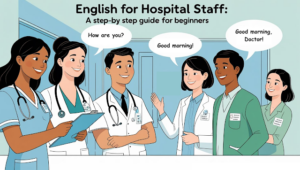Hi there, English learner! 👋
Want to practice English speaking alone? Try fun and easy ways to talk to yourself in English! These English speaking exercises for beginners help you build fluency, confidence, and vocabulary — all by yourself. Learn the mirror speaking method, follow a daily English speaking routine, and discover powerful solo English speaking tips. Perfect if you want to speak English without a partner or improve your self-practice spoken English at home. Let’s make practicing English daily simple and fun!

Do you want to speak English fluently, but you don’t have anyone to practice with? Don’t worry! You can practice English by talking to yourself — yes, really! It’s one of the best ways to improve your speaking skills, build confidence, and become fluent — all by yourself!
Why Talking to Yourself in English Works
Talking to yourself helps you think in English.
- Make sentences quickly
- Use common words
- Fix mistakes on your own
- Feel more confident
No teacher? No problem! Let’s start with the first creative solo speaking exercise.
See also:
- Simple daily use English sentences
- 175+ Must-Know Sentences for Everyday English
1. Mirror Talk – Speak Like You’re Talking to a Friend
What to do:
Stand in front of a mirror. Look into your own eyes. Talk about your day or your feelings.
Example:
“Hi! How are you today? I feel happy because I had a tasty lunch. I also watched a funny video.”
Why it helps:
- You see your expressions
- You practice real conversation style
- It builds self-confidence
Try this daily for 5–10 minutes. It’s like chatting with your best friend — you!
See also: Mirror Speaking Method: Speak Fluent English in Just 10 Minutes a Day!
2. Describe What You’re Doing – Live Commentary
What to do:
While cooking, cleaning, walking, or brushing your teeth — talk about it in English.
Example:
“I’m cutting vegetables. The onion is round and white. Now, I’m putting it in the pan.”
Why it helps:
- You learn action words (verbs)
- You speak without pressure
- You build fluency with everyday vocabulary
3. Give Yourself Instructions – Be Your Own Teacher
What to do:
Pretend you’re giving someone directions — to yourself!
Example:
“Okay, John, first open the laptop. Now check your email. Don’t forget to reply to the client.”
Why it helps:
- You practice commands and future actions
- You sound more natural
- You use English like native speakers do
4. Think Aloud – Turn Your Thoughts Into English
What to do:
Whenever you’re thinking, speak those thoughts in English.
Example:
“Hmmm… What should I eat? Maybe rice and curry. Or should I order something online?”
Why it helps:
- You learn how to express thoughts
- You stop translating from your native language
- You improve sentence structure naturally
5. Storytelling – Talk About the Past
What to do:
Tell yourself a short story — maybe something that happened yesterday.
Example:
“Yesterday, I went to the market. It was crowded. I bought fresh mangoes. They were so sweet!”
Why it helps:
- You practice past tense
- You improve your storytelling skills
- You grow vocabulary and fluency
6. Practice Conversations – Play Two Roles
What to do:
Pretend to be two people. Ask a question and answer it yourself!
Example:
👩 “Hi! What’s your name?”
👨 “My name is Rina. And you?”
👩 “I’m David. Nice to meet you!”
Why it helps:
- You prepare for real-life conversations
- You practice both asking and answering
- You become more confident
7. Record Yourself – Listen, Learn & Improve
What to do:
Use your phone. Record yourself speaking in English for 2–3 minutes. Then listen.
Example Topic:
“My favorite movie and why I love it.”
Why it helps:
- You hear your mistakes
- You track your progress
- You get used to your own voice in English
See also: Self-Talk in English: 14+ Powerful Ways to Practice Speaking Without a Partner (Beginner Friendly Guide)
Bonus Tips to Make Solo Practice More Fun!
- Use gestures while speaking
- Speak slowly and clearly
- Use simple sentences
- Don’t be afraid of mistakes
- Repeat phrases until they sound natural
Final Words – Yes, You CAN Practice English Alone! 💪
Dear learner, fluency doesn’t need a partner. All you need is yourself, your voice, and a little time each day. These 7 creative ways to talk to yourself in English are easy, powerful, and fun.
So next time you’re alone — don’t stay silent. Start speaking English!
See also:
- Morning English Routine: 10 Easy Habits to Speak Fluent English Before 8 AM
- I Know Grammar But Can’t Speak English – 9 Real Reasons (And How to Fix It!)
- Why English Learners Hesitate to Speak – And 7 Friendly Ways to Fix It
- How to Speak English Fluently Without Grammar? (Even If You’re a Beginner!)
- How to Fix: My English is Bad, Terrible, or Poor — Easy Steps to Improve Your English Fast!
- What to Say When You Forget an English Word While Speaking – Easy Tips for Beginners
- Top 10 Spoken English Questions Beginners Ask (With Simple Expert Answers)
- How to Think Directly in English Without Translating: Simple Tips for Beginners
Frequently Asked Questions (FAQs)
1. Can I really improve my English by talking to myself?
Yes! Talking to yourself in English helps you think in English, build confidence, and practice speaking regularly. It’s a powerful self-learning method, especially if you don’t have a speaking partner.
2. How long should I talk to myself in English each day?
Start with just 5–10 minutes daily. As you become more comfortable, increase the time. Consistency is more important than duration!
3. What should I talk about when I’m alone?
You can talk about your day, describe what you’re doing, share your opinions, retell a story, or even create imaginary conversations. The key is to keep speaking!
4. Is mirror speaking really effective?
Absolutely! Mirror speaking helps you practice eye contact, body language, and expressions. It also makes your practice feel more real and boosts your confidence.
5. Should I correct my mistakes while speaking?
Yes, but don’t stop speaking to fix every mistake. Speak freely first, and then review or record yourself to notice and fix errors later.
6. Do I need to record my practice sessions?
Recording your voice is helpful but not necessary. It allows you to hear how you sound, find common mistakes, and track your improvement over time.
7. Can children or beginners use these methods?
Yes! These self-practice methods are perfect for beginners, students, and even children. They are simple, fun, and effective for all levels.


